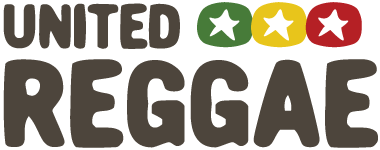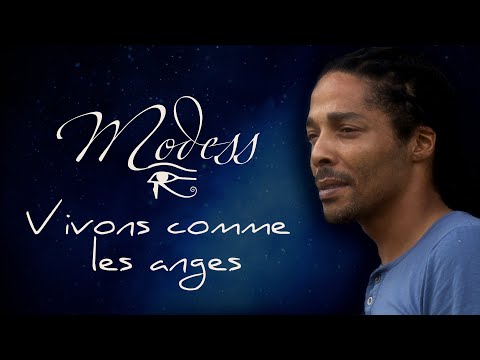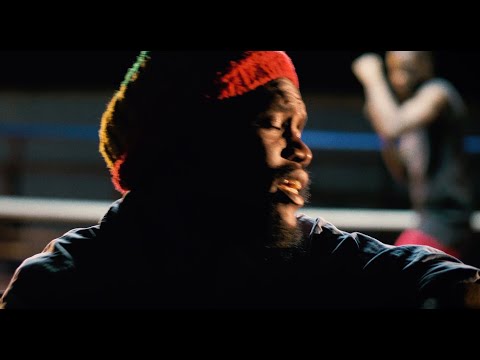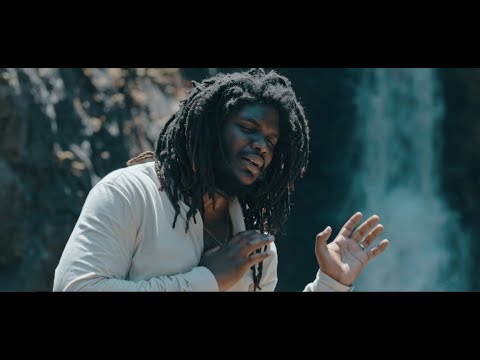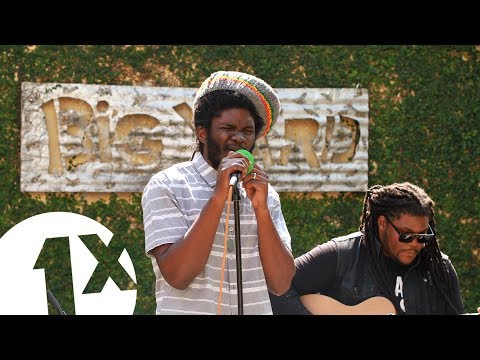Articles about reggae music, reviews, interviews, reports and more...
Interview: Sly Dunbar (Part 1 - Memories)
- Home
- Articles
- Interviews
- Interview: Sly Dunbar (Part 1 - Memories)

Interview: Sly Dunbar (Part 1 - Memories)
"The steppers drumming really started with Phil Chalender at Studio 1"
Sampler
Like Ernest Ranglin, Lowell "Sly" Dunbar has been an excessively generous contributor to Jamaican music. Since he first built his own drums out of discarded cans as a child he has played on thousands of pivotal records by a myriad of producers as well as co-helming as many more himself with his partner and bassman Robbie Shakespeare.
Dubbed "Sly" because of his love for American soul music - specifically Sly & The Family Stone - his debut recording session came via the keyboardist Ansell Collins. Encouraged by Collins and Lloyd Parks Sly drummed for a variety of bands during the new reggae age: The Rainbow Healing Temple Invincibles (with Parks), the Volcanoes (which he joined through Invincibles guitarist Ranchie McLean), then Skin Flesh & Bones who had a residence at the Tit For Tat club in Kingston.
It was at the neighbouring Evil People venue that he met Robbie, liked his vibe, and the two became staunch members of Bunny Lee's band the Aggravators, migrating to Channel One as the Revolutionaries - where Sly created the "rockers" drum sound. There they accumulated enough studio time and money to start their seminal label - Taxi, hitting big first time with Gregory Isaacs' Soon Forward.
International mainstream success beckoned due to their work with Grace Jones for Chris Blackwell's Island Records, who signed up their key harmony group Black Uhuru. In the dancehall era the duo popularised the combination song with Chaka Demus and Pliers Murder She Wrote. They continue to push the boundaries of popular music to this day.
Angus Taylor spoke with the living lynchpin of Jamaican rhythm on Easter Saturday 2012 just as Dennis Brown - one of his countless collaborators - was about to be honoured with a blue plaque outside his former dwelling on the other side of town. This two part interview is the reason why he missed the start! Look out for part two and a chat with Robbie coming soon...
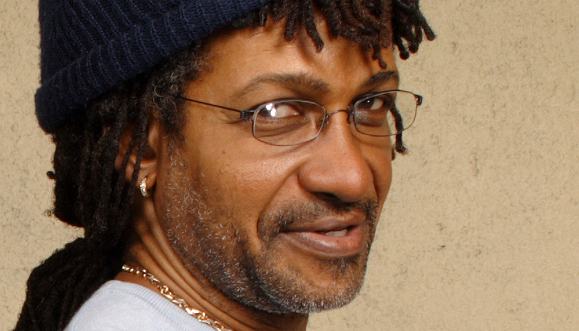
Tell me how you entered the music business in the late Sixties...
I came into the music at 15 years old. Ansell Collins was the one who brought me into the music for my first session. And at age 16 the second song I played was Double Barrel.
You and Ansell pretty much came up with Double Barrel, even though he sold the tapes to Winston Riley who is credited as writer?
Yes, he came up with the piano lick [Very similar to the lick from Ramsey Lewis' Party Time] and then we started working the tune. So I was like his little writer and he would take me everywhere he would go in Jamaica. We worked on that song for a week and then we cut it. We had to borrow someone's drum set for me to play on because we didn't have one. Lloyd Parks was the one who was kind of there and tutored me before I went to the studio so Lloyd Parks and Ansell Collins took me into the recording studio. I still speak to Ansell every day. He calls me on the phone and we talk about music ideas. We still do it same way.
After working with Lloyd and Ansell (and just before you met Robbie) you joined Skin Flesh & Bones, where you played with a wonderful underrated singer called Al Brown who covered Al Green's Here I Am - Come and Take Me (1974) and later Bobby Bland's Ain't No Love - in reggae style.
I joined a band called Volcanoes and he was the singer. Then the band split up and we went to the country to play in a hotel for a while before coming back into town and forming Skin Flesh and Bones and he was the singer there. So in the [Tit For Tat] club we were playing band music so we had to learn a lot of different songs - reggae, soul, calypso, everything. Cynthia Richards was a vocalist with us too. We would play Wednesday to Saturday every night so we would rehearse all these songs. So when Al Green came with Here I Am Baby we used to play the full version on stage. We would always be playing the Al Green version because Al had a tone like Al Green. I don't remember who suggested it but we thought we could do a reggae version of this song. The owner of the club who owned the band, Dickie Wong, suggested we call a session saying he wanted to do an album with Skin Flesh & Bones and Al Brown. This was the first song we cut and it was a smash! I think I did play on Ain't No Love too!
Let's talk about some more of the more collectors' artists you worked with. Later in the seventies around 1977-78 when you and Robbie were at Channel One studio you played on the Phase 1 records tunes produced by Roy Francis. He was a producer with a very distinctive sound - how involved in the recordings was he? Or was it musicians like yourself and engineers like Errol Thompson who were responsible?
We knew Roy for years, from when we were at Channel One and even before. He used to live in America and come every so often to do sessions so we were playing a lot of songs for him. Now he owns Mixing Lab studio in Jamaica and we're still friends - in fact I went there the other day and played on two live rhythms because he wanted a dub kind of thing. We talk on the phone a lot and when he needs some stuff I go down and play there, so we're really good friends. In those days we'd listen a lot to Philadelphia International Records, as well as Motown, Stax, everything coming in, but we liked the Philly modern soul kind of sound. I used to wonder at how powerful and how driving that American recorded sound was and tried to get everything we were doing in that driving force. So we would tell the engineer to try to get it kicking and slamming just like the American records we would play for reference - to get something that sounds like that in volume and power. And at that time with the drum and bass everybody wanted to have the drum in their face! (laughs) So they would push it you know?
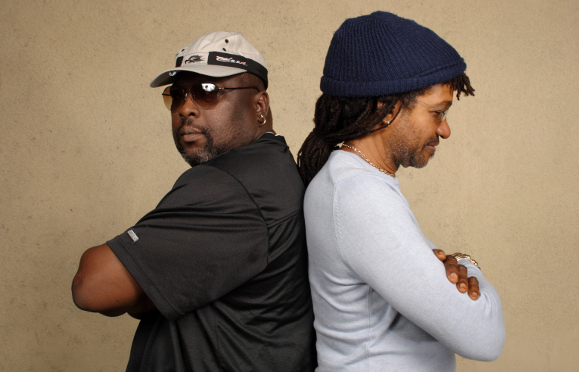
I also want to ask about the late great Freddie McKay, who you played on many songs and a couple of his big albums like Doing It Right (1977) and Harsh Words (1982) . Another artist who people don't know enough about due to his untimely death...
Yes it's true. The funny thing when you talk about Freddie McKay is you used to see him every time we'd go down town and we'd play on a couple of tracks for him. Some of them I don't remember the titles of the tracks but one that really stands out was his festival song...
Dance This Ya Festival (1976)?
Yes! I was in a restaurant once and this guy came up to me and said "What were you thinking when you played that drum on that festival song?" I said "I don't know". I did the Jacob Miller festival song the same day [All Night Til Daylight] in Joe Gibbs studio and then I went down to Channel One to do Freddie McKay's song. I had never heard him before but when I got there JoJo of Channel One said, "We have to win it now Sly!" and I said "Yes, we have to win!" So I said to Ernest "Soup the drum up" as a codeword to just make the drum burn! When I heard the (sings horn melody) and thought "We have to make some fantastic rolls to make the drum start!" so that when the needle hits that record it just pops up so TISH! (sings horn melody) and come with the cymbal. Because it was a festival song you want it to sound happy and so I thought "We have to make it double happy!" so I went (imitates drum sounds) and the studio was crowded literally! Then they said "Part two" and I did a different version in a different drum style!
And you won so you got first and second place!
And even when it comes to festival time and they are playing all these songs, when that song comes up it's a totally different thing and everybody always says "This is so wicked yunno!" I could have gone and played it any old way but I knew JoJo was depending on the pattern I was going to play for the song. And at that time everything in Jamaica was all about the drums so I knew I would really have to find a wicked pattern and send this tune home - so that's what I did!
Today in London Dennis Brown is about have a blue plaque affixed to the house he lived in, it's being unveiled as we speak. Tell me about your memories of working with him.
Oh, that's great! Well Dennis Brown and me we go back from kid days. He knew me from when I was just starting to play and I knew him from when he was just starting to sing. He used to be in this band called the Falcons and sometimes I would come in and be a part-time drummer when the drummer wasn't around. We used to see one another in studios and I knew Dennis was a great singer because I was always a big fan of Delroy Wilson and when Dennis came on the scene I knew he used to sing for Derrick Harriott and all these people. Then one time I started playing these sessions for Joe Gibbs and Niney and I played on songs like Wolf and Leopard and then we went and did a tour in England - I think it was '74. Me, Dennis, the band Skin Flesh and Bones - I don't remember if Al Brown was there, I think Toots was there. It was a long time ago!
Fair enough!
He used to come by Tit For Tat and sing part time with the band. He also used to live up the top of the road from me so we would always check one another. So one day me and Robbie asked him to come to the studio to do some songs [for Taxi] and he sang Revolution and Have You Ever Been In Love, and Hold Onto What You Got. Sitting And Watching was cut before for somebody who didn't like the song. We said "OK we'll take that song then!" and we put it on our tape. From there we were good friends and I think I did another tour with him and Big Youth - I was playing with Dennis and Soul Syndicate with Big Youth. I think Niney called me once and said I'd played on more Dennis Brown tunes than anyone else! They said I played on maybe 2000-2500 Dennis Brown songs. I did most of the stuff for Joe Gibbs.
 I just go in with a frame of mind to play on a hit record, to play a hit pattern
I just go in with a frame of mind to play on a hit record, to play a hit pattern
Also Revolution has been versioned so many times on top of that.
Yes, everybody used that rhythm he did for us! And even Money In My Pocket - I played on the original version and then I went back and recut it and changed the drum pattern and this was the new version that went into the charts. I played on both - which a lot of people don't know.
There are so many things you played on that we could be here all day...
Sometimes I sit down and try to remember and I am blank. Sometimes people call and remind me and I'm like "Woah". Or sometimes I listen to the radio and it sounds like me but then there was a time when a lot of drummers would try to sound like me so there are these little trademark things I would put into the song!
Do you find a lot of reggae fans are a bit obsessed with the difference between rockers and steppers drumming - and do people often ask you about it?
They do often ask, but the steppers drumming really started with Phil Chalender at Studio 1 - the song Mr Fix It. He played it on that song and I used to listen to him a lot and I still do because he played on so many Studio 1 records. I also listened to Horsemouth and some of this stuff was already being played. When I came in as a drummer I listened to all these great drummers - because Jamaican music has produced some great drummers - and to find my place I had to listen to what they were doing. I thought "I have to take this thing and make it my own because I cannot play like them". And because I listened to all this R&B stuff I took all the stuff that I listened to as a kid - Motown, Stax , Philadelphia, Al Jackson, Earl Young and all these great drummers - and said "I have to develop myself if I want to stay in this business". I started working on patterns and beats and taking ideas from them.
Give me an example of how you re-imagined the past...
Like if you listen to [the Mighty Diamonds] Right Time Come - Lloyd Knibbs was the first person I think who played it because I cut the pattern away from one drop to a song called Addis Ababa for Skatalites and a couple of other songs. I listened to him a lot and said "I am playing reggae right now. I can play a pattern like this". So when I played Right Time like this right through people just couldn't believe it because drummers then just played one drop - they might accidentally play a little thing different and then come back to the one drop. I was playing the pattern right through and then JoJo from Channel One gave me the go ahead to pursue that so I started doing a lot of this.
How does the actual music you're playing on inspire you?
A lot of people see me and don't know the inspiration I'm getting when I'm playing this thing. Sometimes the inspiration is coming from the bassline or sometimes from the singer. Because I'm playing a song and playing a part of it not as a drummer but even as a keyboard player would play it. Listening for the pattern or the kind of beat I could flip in the chorus. There is a song called How Could I Leave by Dennis Brown where I played on the original take. When I came back from tour Errol [Thompson] said I had to dub all these drums over saying "It's not rocking" meaning there was no groove in it. I thought it was ok but they said "No ". So I went in the Friday morning they put on the track, I said "This is what I'm feeling" and they said "Play anything you want!" (laughs) Because they knew I wasn't going to play the one drop so they said "Play anything" to make it groove. I started playing and the whole studio jumped up, saying "That's it! The whole song is finished!" But I was just grooving to the bassline and the melodies Dennis was singing. Then there is another song I did which a lot of people don't know I did which is Punky Reggae Party for Bob Marley.
Tell me about that...
I did it at Joe Gibbs' it in one take and he couldn't believe it! I said "Go and record it in one take - I might not get it"! So then he called Scratch and said it was done and Scratch said "What you mean done?" and he said "Sly did it and it's gone!" (laughs) So there's an element of singers and people and it just comes to you. You don't know how long it's going to take and it just happens. I just go in with a frame of mind to play on a hit record, to play a hit pattern. So I am calculating everything when I am going in thinking "What am I going to do today?" I have these things spinning around in my head about what the pattern is going to be like and if the tune is like this or that. But I listen a lot to everybody.
 In today's music there isn't a lot of experimenting. Everything is just going around - the same thing, the same thing every day - so you don't find anything new
In today's music there isn't a lot of experimenting. Everything is just going around - the same thing, the same thing every day - so you don't find anything new
We've talked about Bob so let's mention Peter Tosh's Equal Rights (1978) which was reissued last year with demo versions and outtakes. You were the one who gave Stepping Razor its stepping drum pattern. Did you check it out and how did you feel about your work being reissued like this?
I haven't listened to the outtakes although I did hear it was reissued. Peter Tosh stuff was cool. Equal Rights was when I first got into the band and was the first album I would do with Peter. I was listening to Peter Tosh the other day and trust me, all this music is coming alive, because reggae is something we are checking. Listening back to them now it's in a class by itself - nobody is playing reggae like that anymore. If you listen to Stepping Razor and Nothing But Love with him and Gwen Guthrie and Crystal Ball and Pick Myself Up - listen to just the rhythm of Buckingham Palace. We were just about experimenting with everything we could experiment with to take to reggae music. Whereas you find that in today's music there isn't a lot of experimenting. Everything is just going around - the same thing, the same thing every day - so you don't find anything new. But Peter Tosh albums today, sometimes I sit down and listen and my mind is blown. Even when I listen back to the live shows on YouTube I'm like "Really? That was how it was going down?" Because when you're on stage you're just playing and you don't really know how it sounds - I mean, my God, this is killing you know? (laughs)
You just mentioned Gwen Guthrie. Tell me about how you entered the pop music mainstream with your work with Grace Jones album Warm Leatherette (1980).
I remember before we started the Grace Jones project Chris Blackwell invited Robbie and myself to his apartment to listen to Grace's stuff and he gave us a copy of a record. To this day we haven't listened to another record that he gave us yet! So the session was in Nassau we went down to the studio, nobody knew what to play and we said "We're just going to make some music". Everybody said "Shouldn't we rehearse the song first before we go into the studio?" Robbie said "No, let's go in the studio, get the vibe and let's go cut it!" We had taken a Black Uhuru tape Sensimilla to Nassau and we played it for Chris and everyone was blown out by the sound of Sensimilla and Alex Sadkin the engineer said "We should take this sound for the Grace Jones sound!" He listened to the tape and he had the bass sound, the drum sound, he had the direction we could go because didn't have any concept for Grace. That was when Chris signed Black Uhuru and we went on to cut Grace Jones.
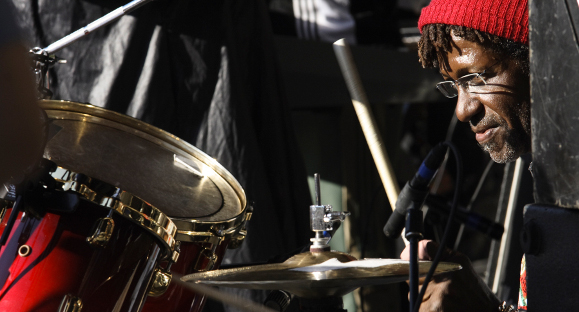
How did the session go down?
The first song we cut was Warm Leatherette and the second song of the session was my favourite song of today in the world was Private Life! So you can imagine us in the studio and this the second song! The sound was already there! All of us were playing for like the second time because we didn't know Wally Badarou and Barry Reynolds but Mikey Chung was there, Sticky Thompson was there and Robbie was there. Everyone thought we had been playing together for years but this was only the second time we'd played. When you listen to the track, even today, even some of the engineers in Jamaica say "Wow!" We did four albums with her and it's been great because it was fun playing with her. I don't know if it was because she's Jamaican and she felt comfortable around us but it came out so great because she felt comfortable and we could relate to one another. That project and the Peter Tosh project were what really launched Robbie and myself to international status. People started looking into what we were doing and then the Black Uhuru came after and then everything came after because people were saying "This sound is great."
Let's talk about Black Uhuru because your link with Michael Rose went back a long way before the albums you produced.
Michael Rose and I grew up in Waterhouse. His brother and I were good friends. They knew me from in the music industry from when I was a kid and I used to come on television and play with Tommy McCook every Thursday on a programme called Top Ten Tunes. So everyone round there knew me and knew I was fooling around with music. I was trying to get his brother into the production side of things and his brother sang a song with my cousin where they had a little group they were trying to form. Michael used to sing in a little band but even before that we used to take Michael up to his aunt and I used to walk with them.
How did you start to work with Michael?
One day Michael came and checked me and asked me if I knew Joe died. I said "No" and he said he died in a crash! I said "Whooa" and told him "I'm at Channel One studio so feel free if you want to come and check me for any link, if I can help I will help". He did a song for Dickie Wong on Tit For Tat called Observe Life or something like that and then he started checking me at Channel One because I was down here every day and he would come by. We did a version of Artibella which came out pretty good and I said "OK, it can work" but we didn't record anything for a long time because I heard they had formed this group called Black Uhuru and he did an album for Jammys which I played on but at the time I didn't have the money to go into the producing business.
Sly & Robbie at Black Uhuru concert in Essien in 1981.
You were originally going to produce their first album instead of Jammy's weren't you? But you were on tour with Peter Tosh right?
Yeah, they came back to check me and said they made it and I said "OK". So I gave him some Earth Wind and Fire and some other things said "Listen to these people" and he came back and started singing Plastic Smile and Shine Eye Girl and it sounded great. So we did some cover versions - a version of Let Him Go by Bob Marley to try the vocal and he did a version of Sun Is Shining too. So we were just experimenting with things. And he came back with the sound and I said "It sounds great - now we can do some original songs" So we went back and start cutting the original stuff like Plastic Smile.
Michael's vocal sound changed so much between his work for Niney and his work for Jammys. How did your own sound develop with Black Uhuru at that time?
We had just come back from a tour with Peter Tosh and we had been at a rock festival where the reggae was sounding so light! We wanted to get it sounding pounding like the rock'n'roll music! So when I came back instead of playing rim I started playing open snare to get some more energy from the music. Our music was a bit slower than rock'n'roll so we had to try to get some energy in it. But at the same time if you doubled the tempo you would get rock'n'roll just by flipping the snare pattern. So I decided if I could play open snare and get more energy it would start sounding tougher live. That sound developed as the Black Uhuru sound because it had this cutting edge to it rather than playing on the rim because we were hitting hard. With Black Uhuru we got a lot of chances to do creative stuff on our own - because we were in charge so we didn't have to listen to anybody! (laughs) We could do things our way. Like Sensimilla - everyone said it had one of the wickedest reggae patterns there is! We would start fooling around singing and playing the pattern then saying "let's go for it!"
 With Black Uhuru we got a lot of chances to do creative stuff on our own - because we were in charge so we didn't have to listen to anybody!
With Black Uhuru we got a lot of chances to do creative stuff on our own - because we were in charge so we didn't have to listen to anybody!
Having worked with the Rolling Stones and Simply Red who would you say is the bigger reggae fan out of Keith Richards and Mick Hucknall?
(big laugh)
Trick question!
(laughing) I think Keith Richards is really a reggae fan and I know Mick loves it also! I think they really appreciate reggae and they love it very much. I think all of them do because when they come to the table to work with reggae you can see their love and the expression in their face!. But another album that was good for us was the Serge Gainsbourg album - it stood up at the time but to this day I think it's one of the best reggae albums. Even today when I listen to that record it is excellent and it was done in only one week!
Let's talk about American soul music which you've mentioned in the interview. You covered Al Green, got your name from Sly & The Family Stone, Marvin Gaye has figured in your work a lot of over the years from Delroy Wilson through to Bitty. Who is your greatest soul singer of all time?
Marvin Gaye and Otis Redding. I like them all but there is something about Marvin Gaye - I don't know if it because he was a drummer! (laughs) But there is something to his songs - the way he sings effortlessly. The other day I was listening to his version of the American national anthem and then we did this version with Ken Bob of How Sweet It Is To Be Loved By You.
Ken Bob's got a great voice.
Yes he does. We were cutting this version because we are just trying to make some music people can enjoy because today in Jamaican music I don't think a lot of people are writing very melodiously now, so that's kind of missing. When we used to be at Channel One and Wailing Souls used to come to the studio and they said Wailing Souls were coming today you'd know the rhythm is going to burn! They'd come with some songs you really can play! When you listen to War you can see the reflection of how I should play that song. There was no other way I could play that song because the way they sing "War in the east and war in the west" and the way I play (imitates the galloping drums) you could hear the army truck coming and the soldiers marching! This was the picture I am seeing! Today you don't see that story anymore in the melody people sing.
Thanks for your time.
I just want to thank you for doing this interview. It's been a great pleasure - we could talk forever you know! Some interviews you do with journalists are not even like interviews. We are just reasoning like friends about how we used to go down to the studio and play.
Read more about this topic
Read comments (1)
| Posted by Lancelot McKenzie on 05.24.2012 | |
| Yes my brother I also endorse your portfolio.This is Maxie... From Channel 1 Recording Studio.Bless UP!!!!....ONE LOVE. |
|
Comments actually desactivated due to too much spams
Browse by categories
Recommended Articles
Latest articles
Recently addedView all
© 2007-2025 United Reggae. All Rights Reserved. Reproduction in whole or in part is prohibited. Read about copyright
Terms of use | About us | Contact us | Authors | Newsletter | A-Z
